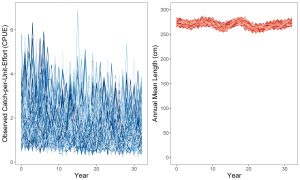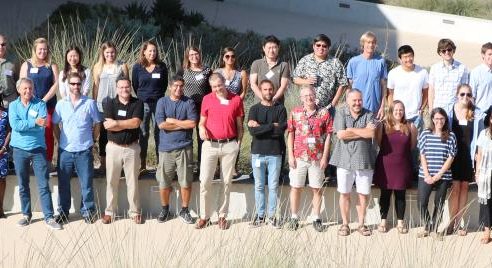Margaret Siple1
1SAFS
October 16, 2018 9:00 (PST): FSH 203
Simulating marine mammal bycatch impacts in data-poor situations
Simulation can be used to explore the expected outcomes of management actions when data on marine mammal abundance and bycatch are sparse or unavailable. For governments interested in evaluating their marine mammal bycatch with respect to regulations or instituting new changes (e.g., gear modifications or new bycatch limits), simulation can be a useful tool for exploring how marine mammal populations might respond to these actions. One of the work products of the Ocean Modeling Forum’s Marine Mammal Bycatch Working Group will be a tool that allows users to visually explore the impacts of different bycatch management actions on marine mammal abundance, given limited information about the fishery or the marine mammal of interest (i.e., abundance, current bycatch rate, and productivity).
The tool allows users to compare outcomes among various bycatch and starting abundance scenarios. It operates at different levels of complexity, using inputs chosen by the user in an age-structured model that projects abundance into the future, given estimates for abundance and bycatch rates. Users can apply specific life history parameters or choose from a list of life history types (humpback whale, bottlenose dolphin, bowhead whale, pinniped, or the ‘generic’ life history type used in the original simulations for PBR). Outputs include abundance trajectories under different management scenarios, and performance with respect to management objectives.
In the future, the tool will also be able to be used to find the strategy most likely to meet certain management objectives and explore the impacts of additional mortality besides bycatch (e.g., ship strikes). This talk will demonstrate the tool’s current capabilities and discuss some of the expansions to the current model, including ways to incorporate non-bycatch mortality and how to “back-calculate” strategies based on management objectives. I would also like to solicit feedback on some of the options for visualizing outputs.
 “
“
